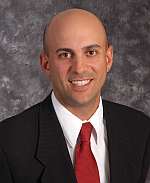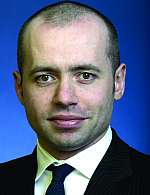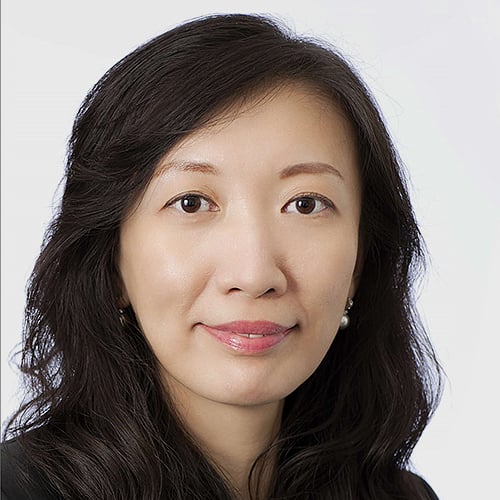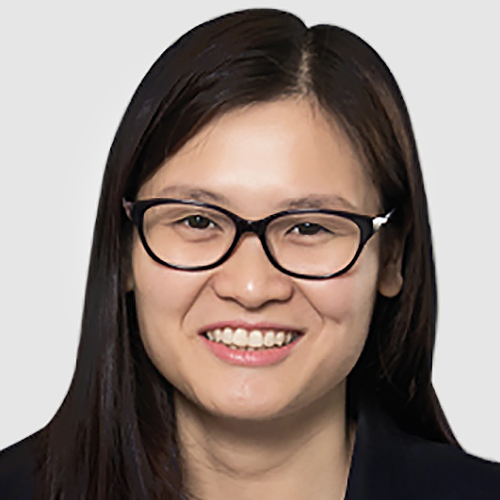 |
|
| Christopher Goolgasian |
An exchange traded fund (ETF) by its nature is a passively managed product designed to mirror a benchmark or an index. While this is still largely correct, it looks like the seemingly desperate search for investment returns in what has been - and will continue to be - a low-yield environment, is prompting ETF designers to veer away from the passive nature of their products to launch what they call "actively-managed" ETFs. This is known as "ETFs of ETFs
Unlike its more traditional counterpart, an actively-managed ETF is one in which the portfolio manager would be making the call to overweight or underweight certain securities within the ETF's portfolio in a bid to outperform a benchmark.
Although traditional ETFs too can outperform their benchmark, they are normally designed to replicate the benchmark/index, rather than outperform them. The idea behind a traditional ETF or passively-managed ETF is to be able to accurately predict the performance or risk profile of the ETF based on the index.
The basic difference between an actively-managed ETF and a traditional ETF is that the former's fund manager can change the asset allocation, time the market trading, or even depart from the benchmark index to generate a higher investment performance. Based on this, predicting the performance or risk profile of an actively-managed ETF based on the benchmark index is more challenging and in fact, less predictable.
Although actively-managed ETFs have been around for while, they were largely ignored by investors who generated high returns from actively-managed funds during the prolonged bull markets preceding the global financial crisis in 2008-2009.
After that crisis, the widespread mood for risk aversion that gripped investors resulted in the popularity of ETFs - as the investing public resorted to the passive management of their portfolios.
Three years after the crisis, however, the extended period of low interest rate yields and lack of performance for most equity markets are making passively-managed funds, particularly ETFs, inadequate for making returns for many investors. This is the reason why actively-managed ETFs are making a comeback.
Through an actively-managed ETF, investors can yield better returns than a traditional, passively-managed ETF portfolio without taking on the additional risk that comes with an actively-managed non-ETF portfolio.
 |
|
| Marco Montanari |
How it works
According to Christopher Goolgasian, vice-president and head of US portfolio management-investment solutions group at State Street Global Advisors (SSgA), an actively-managed ETF can generate returns through active tactical asset allocation (TAA).
"In our case, those decisions take place at the asset class level, meaning we might overweight European equity and underweight US equity or vice versa, which is what we call tactical asset allocation. We do this by making decisions among the ETFs so, in a sense, this is an ETF of ETFs, with our team making the decisions on which ETF to own and at which weight. We do this with a highly disciplined process that is both quantitative, or model-driven, and fundamental, or people-driven," Goolgasian explains.
SSgA has three actively-managed ETFs currently sold in the US where the ETF market is well developed: Income Allocation ETF (INKM), Multi-Asset Real Return ETF (RLY) and the Global Allocation ETF (GAL).
"Each of our three active ETFs can help support these demands in different ways. INKM is an income focussed portfolio, currently sporting a yield of around 4%. RLY is our inflation focussed portfolio, it holds inflation protected bonds, commodities, real estate and natural resource equities - to battle inflation. And GAL is a global tactical fund whose goal is to remove the traditional home country bias many investors suffer from by offering a global view of the world from a holdings' perspective. It currently has an attractive yield in this yield-starved environment," Goolgasian explains.
SSgA now manages around US$20 billion in tactical assets across the globe and has about 60 portfolio managers, averaging 15 years' experience spread across the US, Asia and Europe.
Goolgasian says demand for TAA in the US is very high, as is the demand for higher yielding securities and inflation hedging.
"Tactical demand has grown since the credit crisis, as investors are increasingly asking, 'what could I have done differently'. The search for yield is heightened every day as bond rates fall beyond belief," he comments.
"In the US market, demand is coming mostly from investors who have largely been advisers investing on behalf of their clients. We have found the [investment] adviser community to be open to the diversified all-in-one approach, especially with the tactical component and low expense structure from which ETFs benefit," he adds.
Asia's reception
In Asia, while active ETFs are not yet as well known, they are generating a lot of interest from institutional investors seeking a better performance. However, today's major ETF providers including SSgA, BlackRock and Deutsche Bank have yet to offer an actively-managed ETF product in Asia that has been authorized by regulators.
"This [an actively-managed ETF] is an interesting innovation in the US where you have a large portion of investors which are retail. But in Europe and Asia where the majority of investors are institutional, it's more difficult to sell such a product," comments Marco Montanari, head of Deutsche Bank ETFs and db-X funds for Asia.
Part of the reason is that Asian investors prefer to implement their own asset allocation views themselves, so they would rather buy single ETFs that fit into their investment strategy or portfolios.
"Instead of buying an ETF that is doing its job (asset allocation) in a certain way, they buy single blocks (of ETFs) and build their portfolio because they have their own view of the market. Maybe they will consider an active ETF but it may be just for a tiny portion of their portfolio," Montanari comments.
In the short to medium term, he believes that the growth trends for ETFs in Asia and Europe will be mostly on passively-managed or traditional ETFs until the retail investor base reaches a critical mass that can generate demand for actively-managed ETFs.
"Asian ETF investors are more selective, they don't want regional exposure anymore. They just look for single countries that are less affected by the financial crisis like the Philippines and Indonesia or countries like Germany, Australia or Canada, with good fiscal positions," Montanari explains.
The prevailing view is that with all the stocks being highly correlated, investing in ETFs makes more sense because investors can separately allocate across different stocks in a single market.
"They tend to move all in the same way. They can pick across different countries and generate alpha by doing counter allocation instead of doing stock picking," he quips.
Deutsche Bank's ETF business in Asia, Europe and the US amounted to about US$50 billion with an estimated US$2 billion in Asia including Japan. Of this amount, more than 90% is invested in equity and over 90% has Asia underlying investments.
Managing risks
Goolgasian explains that the risks involved in actively managed ETFs are those associated with the fund managers underperforming their benchmark because of wrong decisions.
"These are risks one would incur with any active product, be that a traditional mutual fund, separate account or hedge fund. It is the risk of active management, it is not inherently any more or less risky to the ETF vehicle structure," he points out.
In the case of SSgA, however, it manages these risks (i) by making sure that the product is well diversified in terms of source of return with around a dozen or so asset classes represented in the fund; (ii) by ensuring that all of the asset classes are income producing-ETFs like dividend paying equities, real estate, preferred stock, high yield, or investment grade bonds; (iii) by making certain that the ETFs are tactically managed by overweighting or underweighting certain asset classes to try and add to the fund's return over time; and (iv) by making sure that the product is total-return focussed.
"What this means is that we focus on buying the asset classes that we think will have the best total return first and foremost, and we let yield be a by-product of that, not vice versa. We see far too many mistakes made when investors chase a little bit of extra yield at a much greater cost of an enormous price loss," Goolgasian says.
"One needs to only recall the subprime era. With this fund, you will have a healthy yield because all of the asset classes are income producers, and so today's yield of around 4% is very attractive. But that 4% is a by-product of seeking the highest total return we can achieve," he says.





.jpg)
.jpg)


